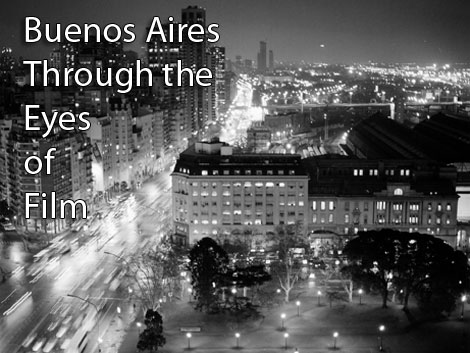
The following is a guest post by Christi Hedke from BananaWho.com, a wonderful film blog.
When it comes to South American cinema, don’t let Brazil steal all the thunder! Here are 5 films to watch that represent a wide cross-section of Argentine viewpoints. The following films are not necessarily made by Argentines, but rather movies that focus on Buenos Aires. Ranging from foreign films to documentary, each of these films focuses uniquely on Buenos Aires, showing her many faces, both unpleasant and pristine.
Happy Together (1997)
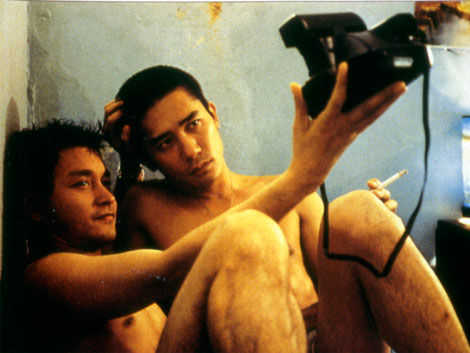
The world-renowned Wong Kar Wai directed this lyrical drama that centers around a gay couple from Hong Kong. Yiu-Fai and Po-Wing come to Buenos Aires as expats where their tumultuous relationship falls into a state of continuous and violent disintegration. They are fixated on taking a trip to Iguazu Falls, an apt metaphor for their relationship, but their lives take them in opposite directions. Wong Kar Wai and his long-time Aussie cinematographer, Christopher Doyle, took the actors to Buenos Aires with a vague idea of a movie they wanted to make, and improvised their way to a feature film, experimenting with film stocks and trying out story lines.
The result is a collage of Buenos Aires nightlife, captured in B&W, monochrome, and ultra-saturated color, set against a soundtrack as wide ranging as vintage tango to Frank Zappa. The film captures a spirit of energy, a mosaic of culture, and a sense that Buenos Aires is a slice of the world itself, and not an isolated city. Happy Together portends Wong’s opus, In the Mood for Love, with its deep sense of longing and loneliness, and teaches how the memory of passion can shape a lifetime.
Tetro (2009)
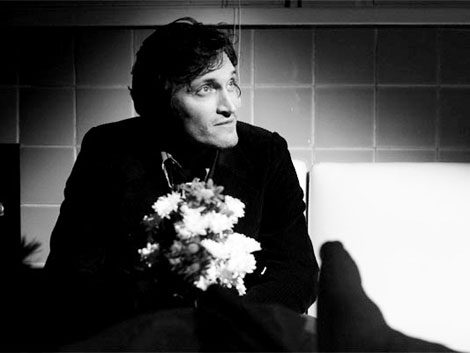
Francis Ford Coppola has proven repeatedly throughout his career that he can make an airtight drama by conventional means and do it better than anyone else. But it must get boring to make crowd-pleasing dramas time after time. With Tetro, Coppola returns with a complex film noir about a family of writers and composers with a dark family history. Vincent Gallo plays Tetro, a broken-legged expat in Buenos Aires whose brother’s arrival exposes a web of family secrets and incites a creative rivalry of epic proportions.
The bulk of the story is shot in drastic black and white, emulating the visual style of film noir, but intermittent flashbacks and Surrealistic dance sequences are rendered in Technicolor, creating a delirious atmosphere next to which Tetro hovers on the cusp of insanity. Though it does feel at times as though Coppola has packed a Godfather-caliber trilogy into one film, Coppola asks interesting questions, and captures Buenos Aires in a serene and sensual light, showing the antique side of this modern city. Watch it on the biggest screen you can find.
Live-in-Maid / Cama Adrentro (2004)
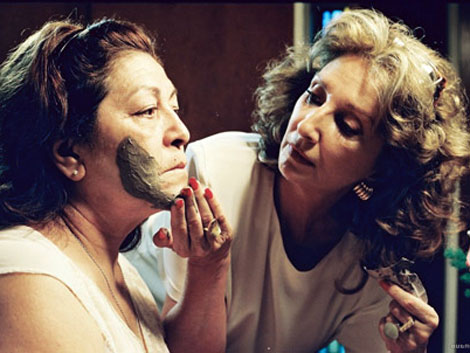
Live-in-Maid tells the story of Beba, an affluent BsAs woman in dire financial straits after the economic crisis of the early 2000´s, unwilling to let go of her earthly possessions and extravagant lifestyle. Her long-time maid, Dora, is saddled with the onus of keeping up appearances, when in fact she hasn’t been paid in seven months, yet still bears a series of humiliations out of loyalty for Beba.
After 30 years of service, Dora inevitably leaves to pursue a life of her own, but she finds herself unfulfilled. Beba, likewise, comes undone without Dora, and the two find a way to come together again, outside the dictates of the social structure. This low-budget indie first appeared at the 2005 Sundance Film Festival in Utah. It is a minimalistic movie shot on video with limited characters and locations, and yet it is able to capture the mindset of the whole city during a period of uncertainty. The film is ultimately a sweet portrayal of the relationship that builds between madame and maid, of the style of Dolores Claiborne, without all the murder, of course.
It casts a surprisingly positive light on the financial collapse, showing how the crisis aided in breaking down class boundaries, finding forgiveness, and creating a new sense of solidarity between unlikely compatriots.
Nine Queens / Nueve reinas (2000)
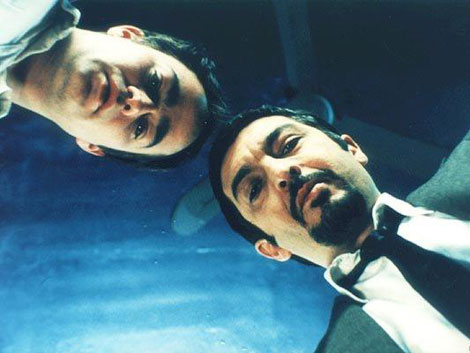
Directed by Buenos Aires’ golden child, Fabián Bielinsky, Nine Queens is probably one of the most beloved films to come out of the city in recent years. This comedic thriller is a heist movie filled with so many reversals your head will spin. The title refers to an exceedingly valuable sheet of stamps that has been forged and appropriated by petty criminals, Marcos and Juan. The two team up to sell the Nine Queens to a covetous collector, but they are a pair of crooks adrift in a city of thieves, and every step of the way they must outsmart or be outsmarted.
Deftly written, superbly acted, and overall delightful, Nine Queens has all the cleverness and funny repartees of Ocean’s Eleven without the swollen budget. Nevertheless, it delivers. In fact, it was remade for American audiences into a film called Criminal starring John C. Reilly and Maggie Gyllenhaal, but it could not compete with Bielinsky’s original vision. Check it out along with Bielinsky’s follow-up film, The Aura, a much darker heist movie about a taxidermist for the Buenos Aires Natural History Museum who falls into a dangerous dilemma during a hunting trip in Salta, Argentina.
The Take (2004)
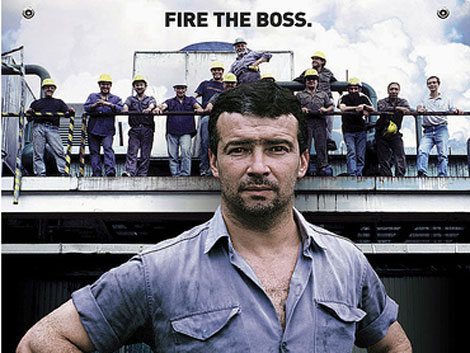
Although this is a Canadian-made documentary, it is certainly must-see Buenos Aires cinema, especially for gringos new to the city, in need of a debriefing on the region’s recent political history. The Take is an über-gripping political docu-drama about workers in the wake of the financial collapse, who banded together to gain legal occupancy of closed factories and restart production on their own terms. Their motto: “Resist, Occupy, Produce.” After years of worsening poverty and economic ruin, the factory workers in suburban Buenos Aires arm themselves with slingshots, and camp in the abandoned factories until they have legal rights to begin production. They form collectives where everyone votes on their own working conditions, and everyone gets paid the same amount regardless of their position at the factory. In an idealized vision of anarchy and socialism, these collectives began springing up around the city, inciting others to restart businesses of all kinds including ceramics factories, metal forging sites, ice cream factories, schools, and clinics.
But when President Menem attempts to return to power, the government beings the forcible shut-down of occupied factories, and a weary group of people grow desperate. The Take has shocking raw footage of violent protests and looting in Buenos Aires, and keeps a startling pace throughout. It is especially interesting in light of the more recent global economic fallout, and an inspiring tale of how the people can take a nation’s devastation into their own hands to begin the process of reparation.

7 Comments on “Buenos Aires Through The Eyes of Film”
Just put all of these in my queue in Netflix. Can’t wait to watch!!!
Pingback: Buenos Aires Expats - Online Community of Expatriates and guide to living in Buenos Aires, Argentina
Great blog post! A new one to add is “El Secreto de Sus Ojos” which won the Oscar for best foreign film and deals with the past of BsAs right before the last dictatorship.
How about The Secret in their Eyes? I loved the way it portrayed the city.
Have you seen “La Suerte Está Echada”? 2nd best argentine film… and super porteña!
http://www.cinenacional.com/pelicula/la-suerte-esta-echada-0
Saludos!
There are some on this list that I haven’t seen and I’m happy to check out! Also as other people have mentioned, “El Secreto de Sus Ojos” is a must see movie. Even though I haven’t exactly seen it myself, I’ve been told it is a very good one, and a must see. =)
p.s. love your blog!!! keep it up.
Maybe these don’t fit for whatever reason into your parameters, but are wonderful films showing BsAs:
El Cuento Chino
El Elefante Blanco
Esperando la Carrosa
El Hijo de la Novia
The Tango Lesson